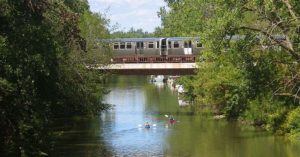For more than 50 years, the National Environmental Policy Act (NEPA) has stood in the way of dangerous and damaging federal projects. While it’s not always perfect or effective, the process of NEPA is fundamental to our understanding of how projects like bridges and pipelines affect the environment and the communities they’re built in.
 As the Natural Resources Defense Council simply puts it, “Before the government can take any major action, it needs to assess the impact of the project, inform the public of its plans, consider other options, and open up its proposal to public comment.”
As the Natural Resources Defense Council simply puts it, “Before the government can take any major action, it needs to assess the impact of the project, inform the public of its plans, consider other options, and open up its proposal to public comment.”
Those sequential steps for federal agencies have been around for years, but on Wednesday, July 15th, the Trump administration finalized its plan to drastically change and undermine the core principles of NEPA. The administration says they are committed “to slashing the web of needless bureaucracy.” But as the United States grapples with a global pandemic and systemic racism, this is not the time to dismantle one of our oldest environmental laws. Doing so will put more people in harm’s way during and after this public health crisis.
Among other things, the administration’s new rule includes provisions that:
- alter and limit the types of projects that can be reviewed under NEPA;
- change the type of environmental impacts considered for a project, all but eliminating the need to study how it could exacerbate climate change and other issues;
- shorten the deadline of some environmental reviews to no more than two years; and
- modify how people comment on proposed projects near their homes and families, severely limiting the ability of low-income communities and communities of color to oppose dangerous projects.
Fortunately, long legal battles are expected in the coming months to slow or completely halt the rule. PRN will continue to monitor where the rule stands and reach out to you, our members and supporters, if there is a way you can help us defend the National Environmental Policy Act.
(Photo credit: Jeremy Atherton / Creative Commons / North Branch of the Chicago River)







